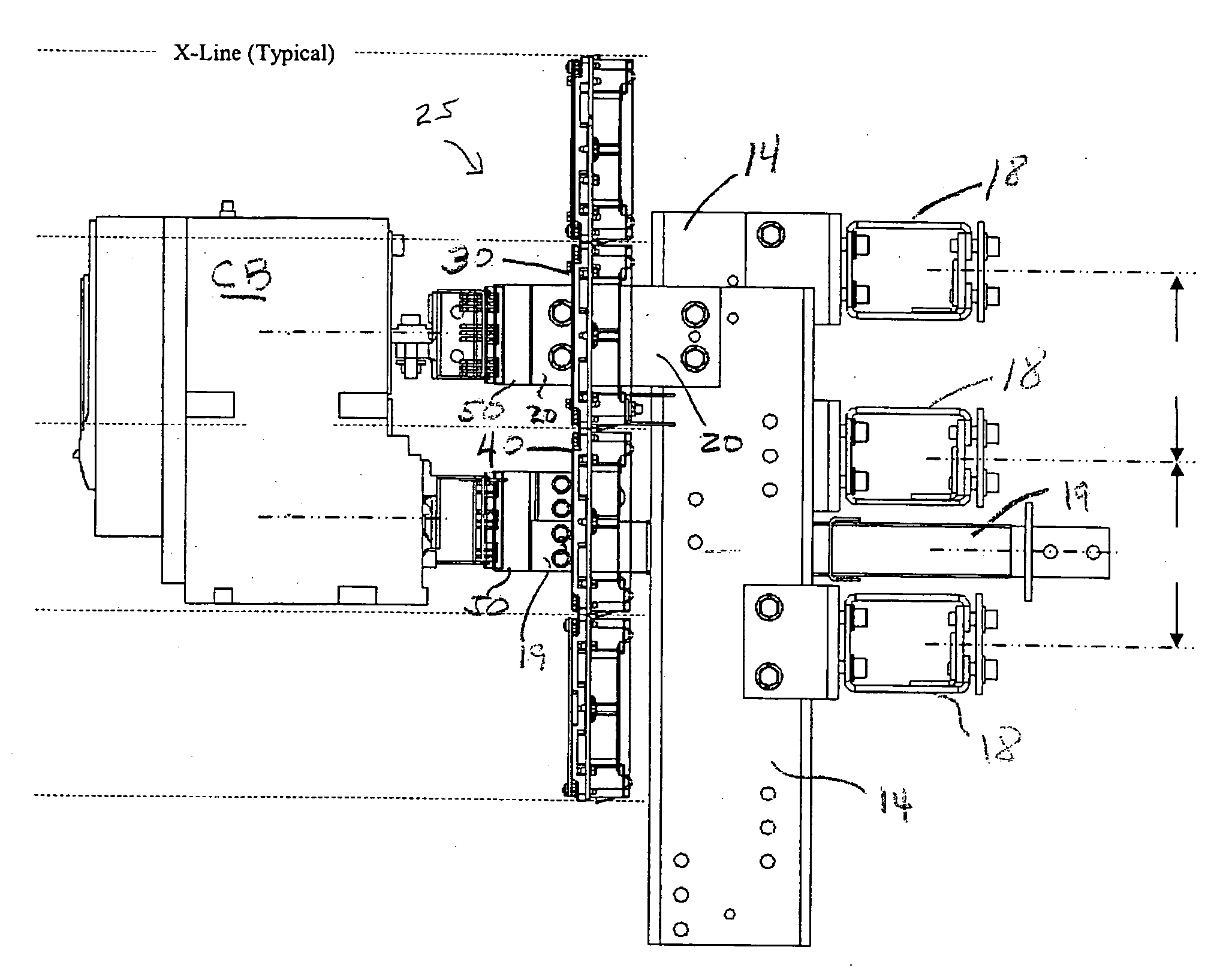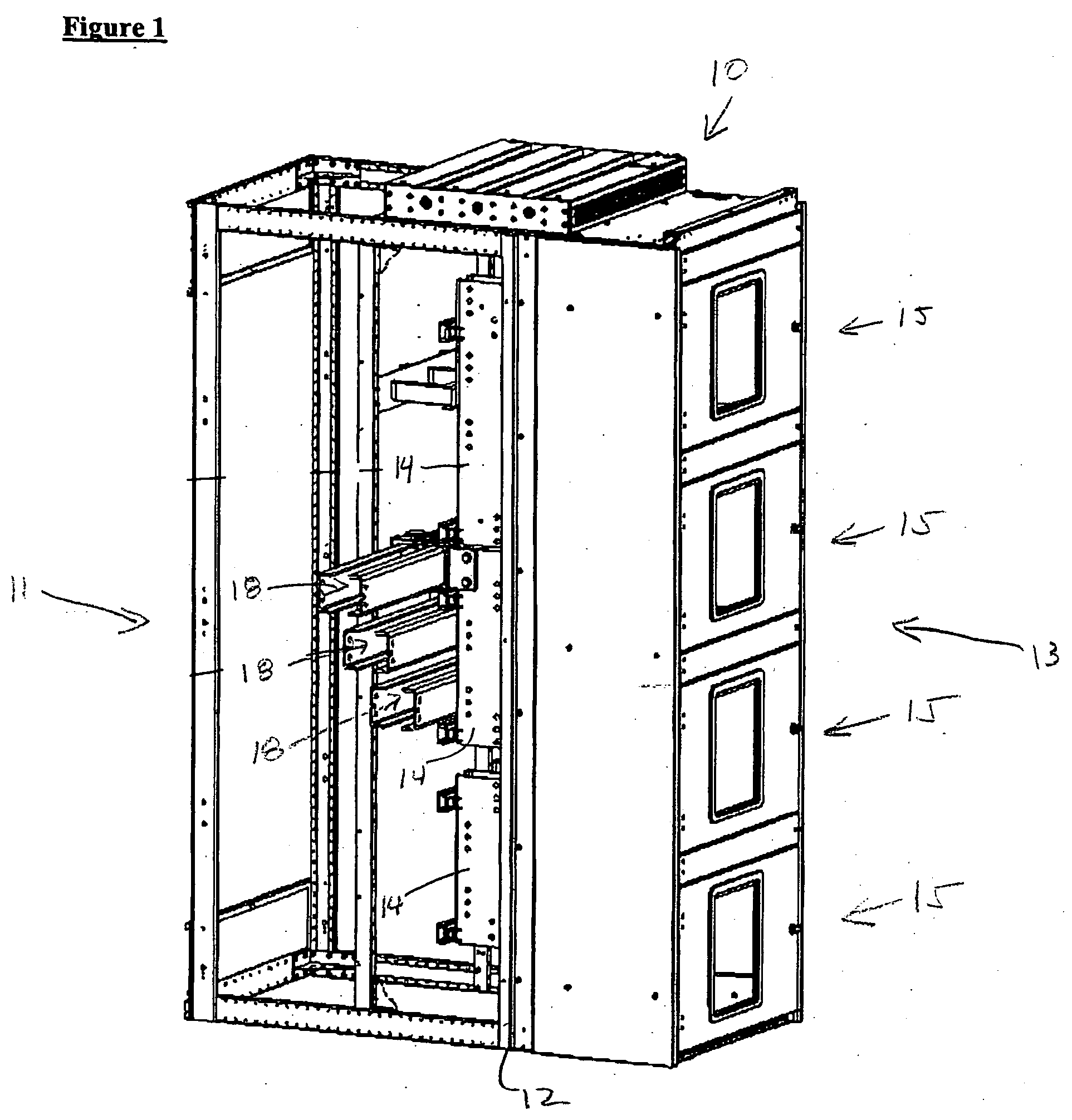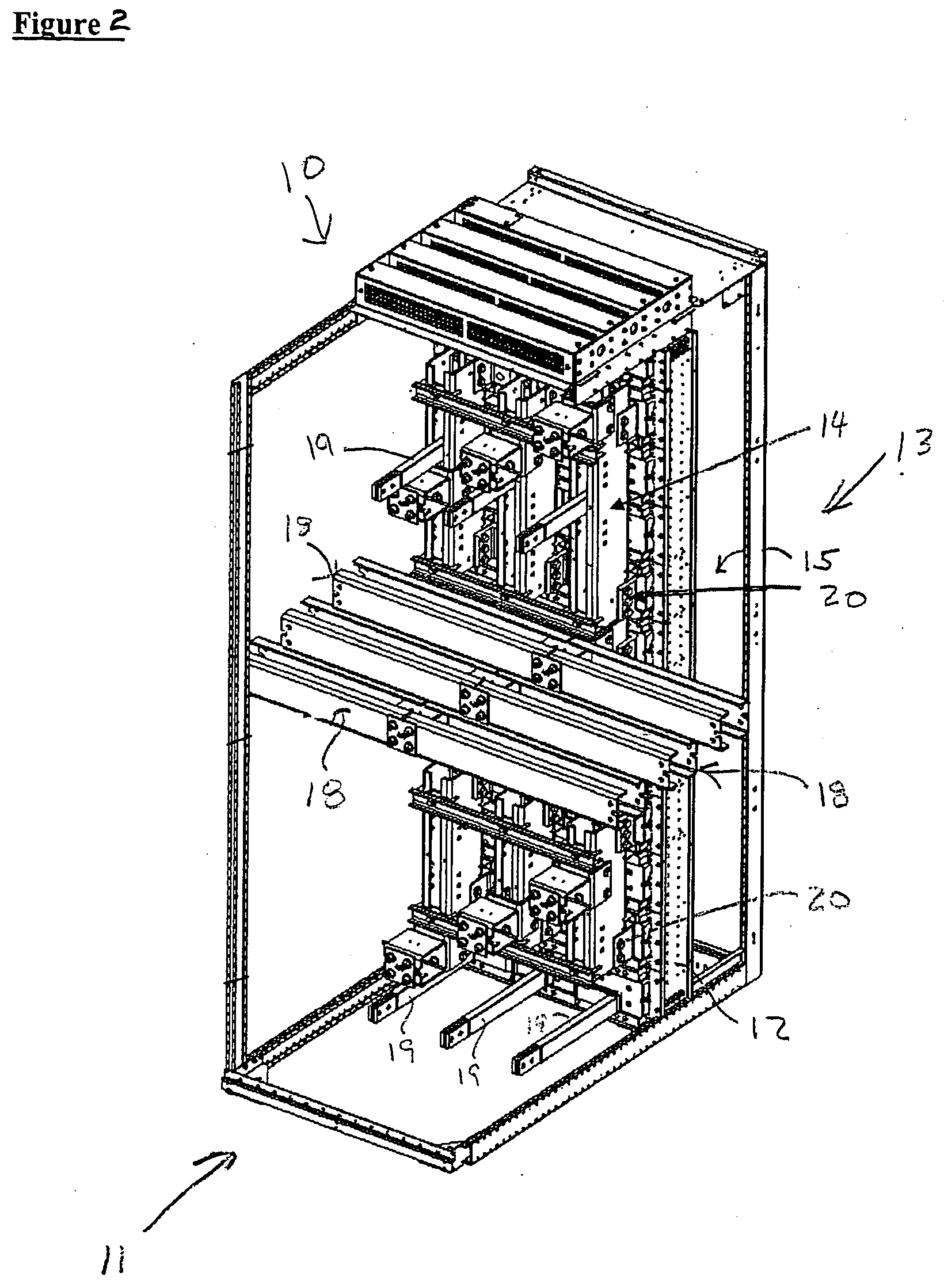Modular arrangement of components of electrical equipment enclosure
a technology of modular arrangement and components, applied in the direction of switchgear arrangement, electrical equipment, arrangement with metal casings, etc., can solve the problems of not being able to be removed without the use of tools, requiring special tooling, and additional time with the overall system down
- Summary
- Abstract
- Description
- Claims
- Application Information
AI Technical Summary
Benefits of technology
Problems solved by technology
Method used
Image
Examples
Embodiment Construction
[0021] Before describing the exemplary embodiments of an arrangement of components 25 in an electrical equipment enclosure 10, for example, a switchgear enclosure, having multiple-phase (A, B, C) electrical power run-in bus bars 20 and run-back bus bars 19, several comments are appropriate. Switchgear assemblies and panel board assemblies typically include vertical (section) bus bars to distribute electrical power within the enclosure. In a short circuit condition, extreme magnetic forces are created in the bus bars as a result of short circuit currents up to and including 200,000 amps symmetrical RMS flowing through each bus bar. For a low voltage switchgear and switch boards operating at voltages up to 600 volts and continuous currents that can exceed 5,000 amps. In a three phase power system (typically) as a short circuit current flows through such bus bars, magnetic forces between adjacent bus bars tend to move such bus bars laterally (perpendicular) to the current flow. The cir...
PUM
 Login to View More
Login to View More Abstract
Description
Claims
Application Information
 Login to View More
Login to View More - R&D
- Intellectual Property
- Life Sciences
- Materials
- Tech Scout
- Unparalleled Data Quality
- Higher Quality Content
- 60% Fewer Hallucinations
Browse by: Latest US Patents, China's latest patents, Technical Efficacy Thesaurus, Application Domain, Technology Topic, Popular Technical Reports.
© 2025 PatSnap. All rights reserved.Legal|Privacy policy|Modern Slavery Act Transparency Statement|Sitemap|About US| Contact US: help@patsnap.com



